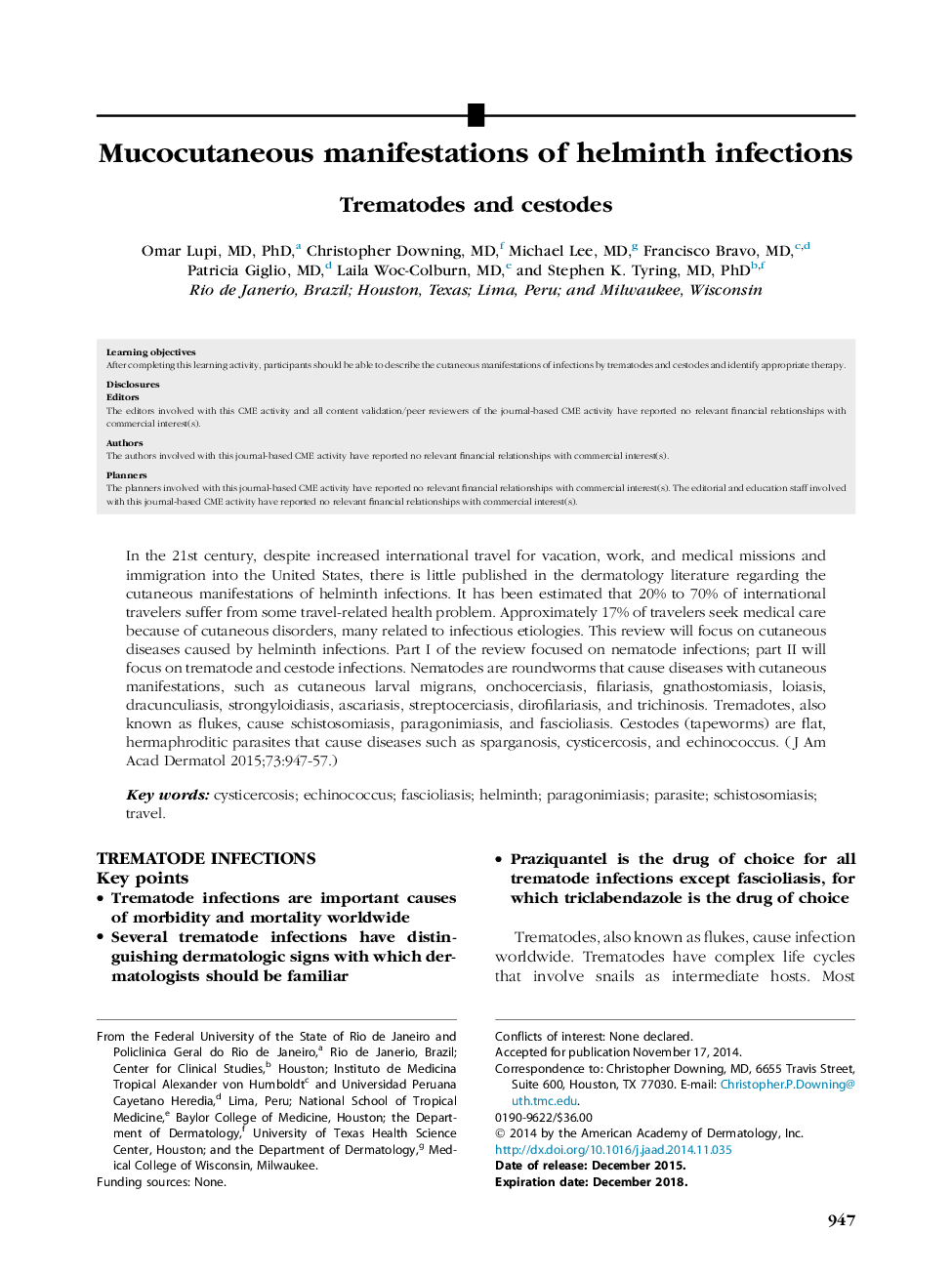| Article ID | Journal | Published Year | Pages | File Type |
|---|---|---|---|---|
| 6070995 | Journal of the American Academy of Dermatology | 2015 | 11 Pages |
Abstract
In the 21st century, despite increased international travel for vacation, work, and medical missions and immigration into the United States, there is little published in the dermatology literature regarding the cutaneous manifestations of helminth infections. It has been estimated that 20% to 70% of international travelers suffer from some travel-related health problem. Approximately 17% of travelers seek medical care because of cutaneous disorders, many related to infectious etiologies. This review will focus on cutaneous diseases caused by helminth infections. Part I of the review focused on nematode infections; part II will focus on trematode and cestode infections. Nematodes are roundworms that cause diseases with cutaneous manifestations, such as cutaneous larval migrans, onchocerciasis, filariasis, gnathostomiasis, loiasis, dracunculiasis, strongyloidiasis, ascariasis, streptocerciasis, dirofilariasis, and trichinosis. Tremadotes, also known as flukes, cause schistosomiasis, paragonimiasis, and fascioliasis. Cestodes (tapeworms) are flat, hermaphroditic parasites that cause diseases such as sparganosis, cysticercosis, and echinococcus.
Related Topics
Health Sciences
Medicine and Dentistry
Dermatology
Authors
Omar MD, PhD, Christopher MD, Michael MD, Francisco MD, Patricia MD, Laila MD, Stephen K. MD, PhD,
